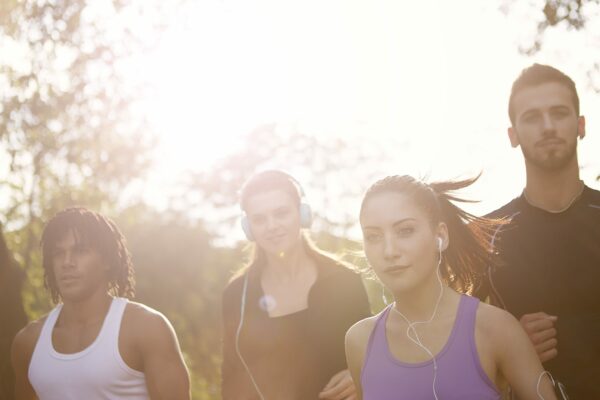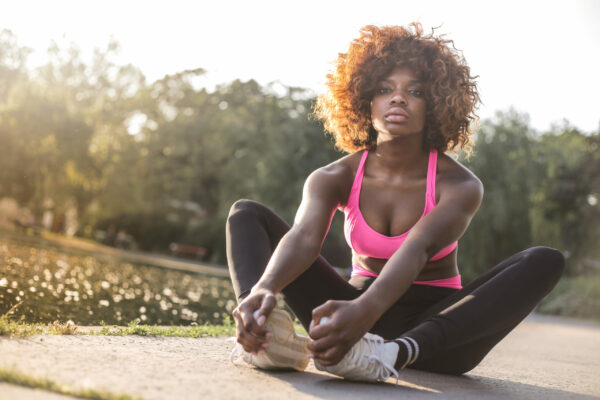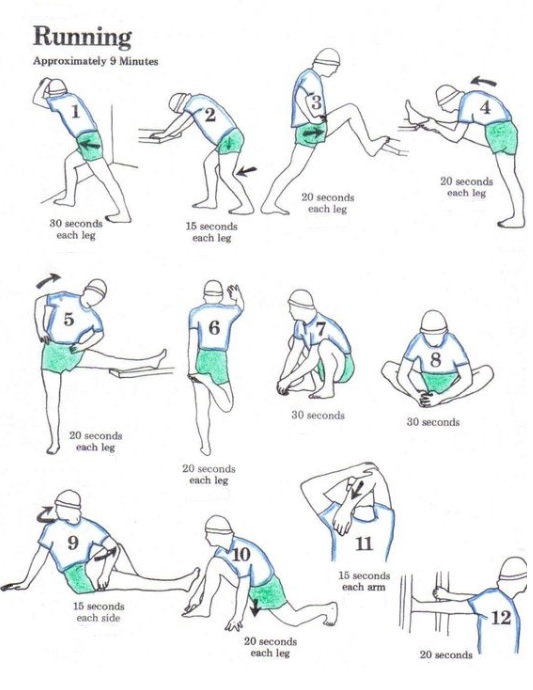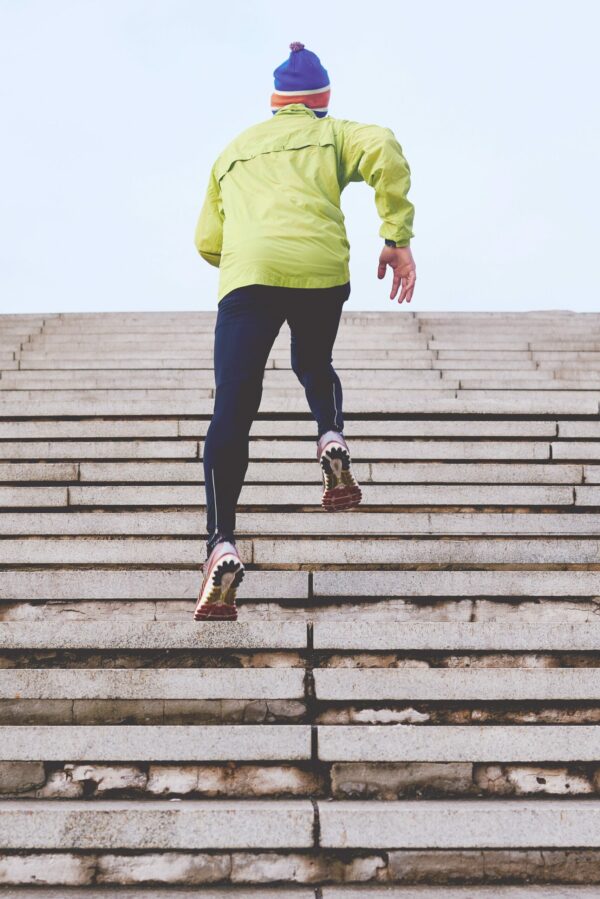The United States Department of Health and Human Services, define physical fitness as “a set of attributes that people have or achieve that relates to the ability to perform physical activity.” So, how to run for better fitness is obviously a great way to develop abilities and skills to perform physical activity leading to better health and life quality.
Running For Fitness
Running is particular a great way to help to improve cardiovascular health and lung functions and it’s natural for us to run, it burns calories and builds up strength and flexibility when performed in the right way. There’s also a long list of mental benefits. Technique exercises strengthen all muscles in the body and make it strong so it can withstand the many shocks it is exposed to during a long run.
Running places great demands on the cooperation between many muscles in the body. The timing in the muscles’ tension is crucial for the development of force in the muscles that drive the body forward. The better coordination, timing and strength in the muscles, the greater force can be developed.
When you perform running training that improves running technique and strength, you also prevent injuries, promote your running economy and move forward faster. In that way, you will become effective in your efforts to attain better fitness.
Run For Fitness in an Inactive Everyday Life
In general, all forms of work today have become more physically inactive than earlier. We drive more in cars, uses the metro, train and bus and at home, we can quickly spend hours on various sedentary activities such as television, dining, PC, mobile devices and other things. Many compensate for this by running before or after work.
The challenge with an inactive everyday life is that the body’s joints, tendons and muscles are not loaded to the same degree as they were created for and thus do not have the strength, agility and function required when we run.
Specific strength training should therefore also be part of the running training so we prevent the development of injuries. We do that by planning the training week following our current training level.
Get Better Better Running and Fitness Results
One of the most characteristic things about elite runners’ training is that they focus a lot on quality, and beginners, joggers, exercisers can learn a lot from this. Instead of just running the same route every day, we can switch between many forms of running and terrains.

The purpose of technique training is to run faster and be able to keep running longer. Various exercises can help to promote the stride length and thus the pace. Some of the exercises can be demanding for the legs and require that you have some running experience. But before we jump into that it is important with knowing…
Exercises to Warm-up and Cool Down – Before and After Running
It is always a good idea to warm up before physical activity. Warm-up has a clear preventive effect on the occurrence of injuries. Studies have shown this, and many physiological explanations support this too. There are many ways to warm up your body, but the absolute best is the active method by motion of the body.
It warms up the muscles and joints in both surface and depth. Since the effect has a strong local influence, it is also important that you warm up in relation to the relevant sport. It is not strictly necessary with a long warm-up before the long runs in your training. However, before intensive running like interval training, it is very necessary.
Your Warm-up may consist of easy jogging, which increases slowly in intensity, stretching, runs over 50 to 100 m which goes from easy jogging to faster run in a controlled pace, plus various coordination exercises with jumps and where you ’overdo’ your movements, heel kick and knee lift like:
High-knee skips
This is an exaggerated skipping motion. Skip forward on to one foot, lifting your knee high in front and using your arms in a running action. Aim to spring up as high as possible as you skip from foot to foot.
Heels to bum
In jogging pace, put your hands on your bottom and then bring your heels up to meet them one after the other as you jog for a further 20 – 25 meters.
By motion, you automatically activate the nervous system and hereby the nervous paths out to the muscles. It improves the coordination ability of the movement patterns that you subsequently perform. Good coordination is a very significant factor especially if we want to avoid injuries – as mentioned before.
A Careful Warm-Up
When the muscles are at rest, the muscle tissue and connective tissues, which surround the muscles are reduced slightly in size. When you warm up the muscles by physical work, they become more flexible. A low load of muscle and tendon tissue at the beginning of the warm-up, which gently intensifies will provide a controlled and increased flexibility. Muscle and tendon tissue will hereby be ready for more intensive use.

After a careful warm-up, the muscles can be up to 10 % longer than in the resting state. An abrupt transition from rest to training, without gradual preparation, will strongly increase the risk of overstretching of muscle and tendon tissue. If the muscles are warmed up correctly, they can work in a longer movement path, giving the runner an opportunity for greater freedom of movement and thus giving a performance-enhancing effect.
When we warm up, there will be a temperature increase, which occurs as a result of the increased blood circulation in the body in general and particularly in the active muscle groups. The temperature increase will get chemical processes in the muscles to be quicker. This affects among other things the activity in the nervous paths, which controls and activates the muscles in a positive direction.
Warm-up results
As you see, warm-up does not only prevent injuries but also increases performance. The benefits lie in the ability to transport oxygen to the working muscles rapidly and the mentioned increase in nervous control.
When the muscles begin to work, increases the need for oxygen to the muscles considerably. Since oxygen carries with the blood, the conditions for optimal blood circulation must be present. At rest, the blood vessels out to the muscles are partially closed, and the blood circulation is slow. If we suddenly begin to work more or hard, it takes some time before the blood circulation increases in proportion to the Oxygen demand.
Warm-up prepares the body for activity
The result is that the muscles’ performance is not as good, as if you already had paved the way for the opening of the blood vessels. At rest, it’s only about 15 to 20 % of the blood circulation that goes out to the musculature, whereas about 75% of the blood circulation after 10 to 12 minutes of active warm-up goes out to the musculature. The performance on this basis will be much greater after warming up. When we are warm-up, we prepare the body for the coming activity event.
When you run the long runs like 15+kilometers, it is not strictly necessary to warm up, because of the moderate pace. You can use the first 2 km of the distance to warm up. The most important with long runs is the long low/moderate effect on the body, so if you start slowly, the long serious warm-up does not make sense.
Cool Down
Cool down after training should also be included as a natural part in the prevention of injuries. After a training session, it will be a good idea always to finish with easy jogging in about 15 min. It increases the transport of the accumulated waste material away from the muscles and reduces the subsequent muscle soreness.
Stretch exercises should also be a part of the cooldown to stretch the connective tissues in the muscles, which have been shortened and tightened up during the training session. When you cool down after competition, races or hard training, you should also as fast as possible switch to dry clothes to avoid a cold.
Stretching Before and After Running

In virtually all sports stretching exercises are an integral part of the training sessions. Stretching uses as a means to maintain mobility in the joints. We do it as a part of a warm-up before the real training and after training as a part of cool down. In practice, this means that connective tissue in the muscles is put under stretch.
For that purpose, we do a Series of stretch exercises adapted to our sport. In intervals or intensive training sessions, it is extra important to Warm-up and performs stretch exercises, before we start the intensive training session and stretch exercises after we finish the training – after the cool down run.
Your stretch exercises can consist of stretching the major muscle groups in 20-30 seconds – it must be tight, not hurt. The most common stretching exercises for runners are illustrated below:

At the end of the warm-up, we can make runs over 100 – 200 m with increased pace. We start at a low pace, increase gradually and end with max. pace in the last part of the distance. Walk back to the starting point and run again.
Hill Running
hill running is performed in hilly terrain, where you run up hills with small, fast steps and the arms pull is made more active than usual so that the body is ‘pulled’ up the hill. You ‘attack’ the hill by running on your toes and leaning forward. At the top of the hill, you can jog until you catch your breath again before the next hill.
Hill Training
Find a suitable hill that is wide with a fairly even surface. From here you can do different series with heel kick, high knee lift, longer stride length, etc. Walk or jog down again. In general, hill training is one of the hardest forms of training, and therefore it is important to start carefully. As with hill running, you train the muscles in the hips and calves as well as the buttocks and thighs.
Stair Training

If you live in an area without hills, stair training is a good alternative. Stair training trains are pretty much the same as hill training, and you can almost always find a place with suitable stairs. It is fine if you find a place with 20 – 30 steps. You can both run and jump on stairs, but be a little careful especially down the stairs so you do not get too eager and stumble. Stair training must be built up slowly.
Cross-Training for Better Fitness
Strength training as cross-training or supplement provides many benefits for your running and fitness. You get a basic strength to handle the runs and at the same time, you shape your figure. It is a myth that runners should not do strength training and you can perform it either in the fitness center or by specific running exercises using your body, which particularly strengthens muscles, ligaments and tendons in your lower body.
Studies on strength training
Many studies show that strength training promotes speed, provides a better running economy and prevents injuries. Also, muscle training provides better fitness, a well-shaped body and a greater energy-burning muscle mass.
Without strength training as a supplement to virtually all running distances, the development of injuries is big. Often, we just do not think there is something to do in preventing it.
However, we CAN prevent shin splints, Achilles tendonitis (is an ‘overuse’ injury of the Achilles tendon, the band of tissue that connects calf muscles at the back of the lower leg to your heel bone), runner’s knee (means that you have dull pain around the front of the knee. This is where the knee connects with the lower end of the thighbone), hip problems and low back pain, shoulder and neck tensions and, in general, the discomfort that some people feel when they run.
Running is an incredible amount of complex tension of tendons, muscles and ligaments that must move and support the joints. A run involves a lot of repetitions of the same tensions, movements and loads and for the body to be able to handle it, it has to be trained up to it.
This is why you become very sore and may experience pain if you run longer than your body is in shape for. But as said, running is not always enough if you want to train your body for longer runs without getting an injury. Muscle training is needed. And then the muscle training also gives a boost to the abdominal muscles, buttocks, and arms, which cannot be achieved by running alone.
Final Thoughts
Running is probably the most natural way to attain better fitness and with strength training as a supplement, you get more of the good runs and fewer of them where you have to drag yourself through. When you combine your running with strength training, you will be able to notice a difference relatively quickly. Some of the things you may notice are:
- You will run faster
- It becomes easier to run – especially up hills
- You get a better posture when you run, and become less tired in e.g., shoulders and back
- You get fewer injuries
- you recover faster from other stressors in your life
- you will achieve greater well-being, energy, and surplus
I hope you get something out of this post and if you have any questions about the topic or want to leave your own Personal review, please leave a comment below.
[faq-schema id=”3618″]





I used to run a lot, and I did marathons. That was years ago and ended when I started getting knee and foot pain. I don’t remember really ever warming up. Could this have been my problem? I’d like to pick it up again as it is a great way to exercise and get my cardio in. But I don’t knee or foot pain again.
Hi Leahrae
Thank you for the comment. You can “test” your knee and feet pains in the elliptical trainer (Cross trainer), which is my favorite alternative to running outside. This machine is great and gentle to the legs.
Be Well